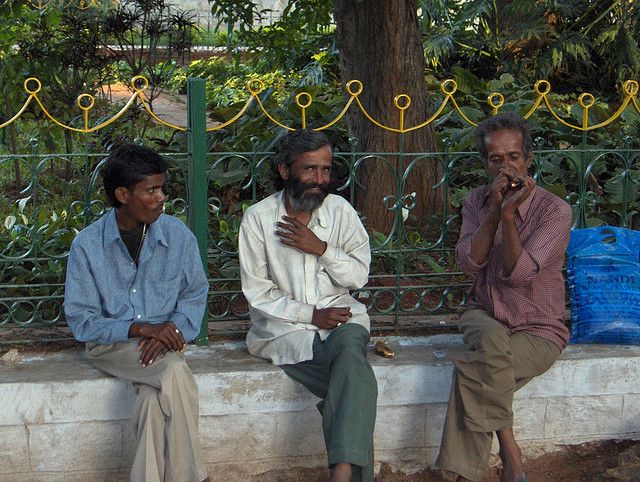Smoking bans could save over 9 million lives in India
New research claims that an astonishing nine million smoking-related deaths could be prevented over the next decade with smoking bans. A team of scientists from the U.S., England, and India created a math model to devise strategies to reduce future heart attack and stroke deaths from 2013 to 2022. They deduced that the two most effective measures were smoke-free laws and increased tobacco taxes.

In India, one out of five men dies because of smoking and one in three people report being exposed to smoking in the workplace.
Smoking casualties and solutions
In India, one out of five men dies due to smoking and one in three people report being exposed to smoking in the workplace. Unfortunately, deaths from cardiovascular disease linked to tobacco use are expected to rise 12 percent over the next decade. The World Health Organization predicts that tobacco deaths in India may exceed 1.5 million annually by 2020.

Deaths from cardiovascular disease linked to tobacco use are expected to rise 12 percent over the next decade.
The researchers created a microsimulation model that included population-representative data from India on stroke mortality. They then simulated and compared the effects of five different tobacco control measures:
- Smoke-free legislation
- Tobacco taxation
- Advice to stop by healthcare providers
- Mass media campaigns
- Advertising bans
They found that increasing smoke-free laws and tobacco taxes were the single two most effective ways to curb smoking. These two steps alone would reduce heart attack deaths by six million and stroke deaths by 3.7 million. A total of 9.7 million lives could be saved over the next decade.
Study statistics
The researchers for this study stated that the findings assume that the Indian population would have a similar reaction as other populations would to these recommended measures. Nevertheless, it is an important model for other developing nations to refer to if they are interested in preventing incurable diseases.
Here are some statistics on India’s population to understand the context of the research:
1. India is the second most-populated country in the world, with over 1.1 billion people.
2. 30 percent of the population (195 million people) 15 years or older either smoked or chewed tobacco.
3. The smoking and chewing tobacco consumption rates are 47 percent for men and 14% for women (154 million men and 41 million women).
4. Tobacco consumption was significantly higher in poorer castes with lower education rates castes and tribal populations/tribes.
5. India has one of the highest rates of oral cancer in the world, which is particularly attributed to the high rate of tobacco chewing.
In low and middle-income countries, strokes and heart attacks are on the rise because of tobacco. There are many popular ways to consume tobacco in India:
- Smoking cigarettes, bidis (small, hand-rolled cigarettes), chewing tobacco, and second-hand smoking.
- Chewing tobacco forms include pan (a betel leaf filled with spices), pan-masala (a chewable tobacco) and mishri (a powdered tobacco rubbed on the gums as toothpaste).
Consuming tobacco may be common practice, but as the research shows, curbing the habit will yield tremendous benefits. If 9 million deaths can be prevented in the second-most populous country, the rest of the world will certainly take notice.

View this sign smoke free laws and tobacco taxes could save over 9.7 million lives over the next 10 years.
Category: Smoking Rules

















As a preventive healthcare organisation, we can suggest the following health check-ups on our portal for healthy lungs.
Kindly visit the link- http://www.healthians.com/smokers_profile